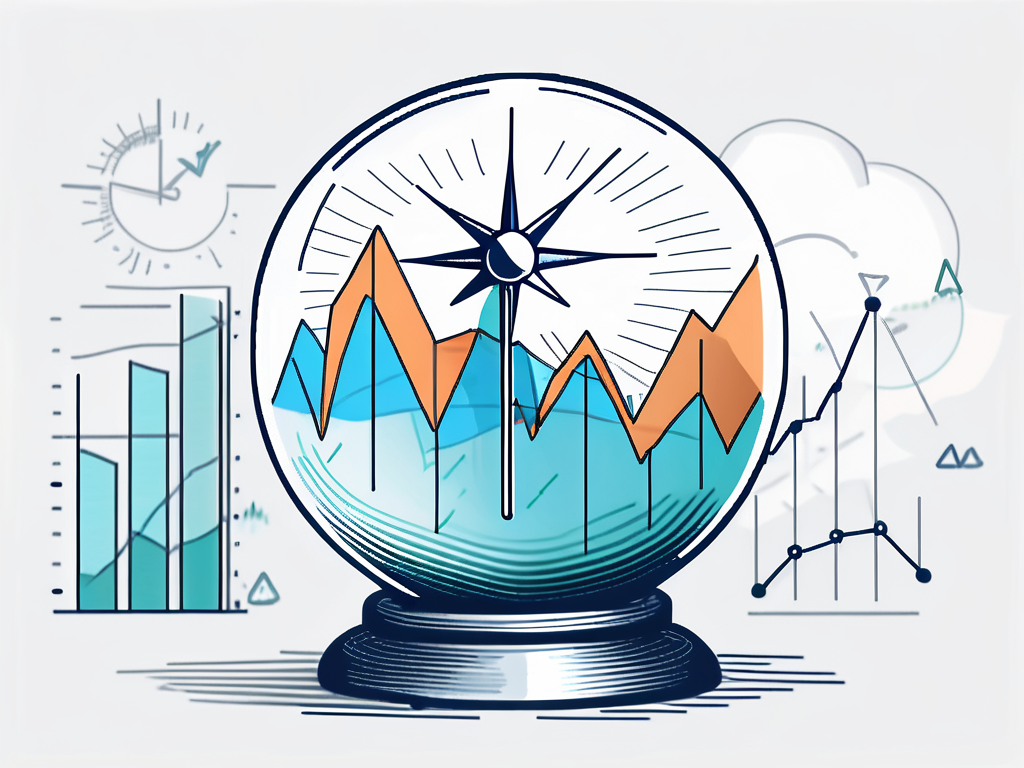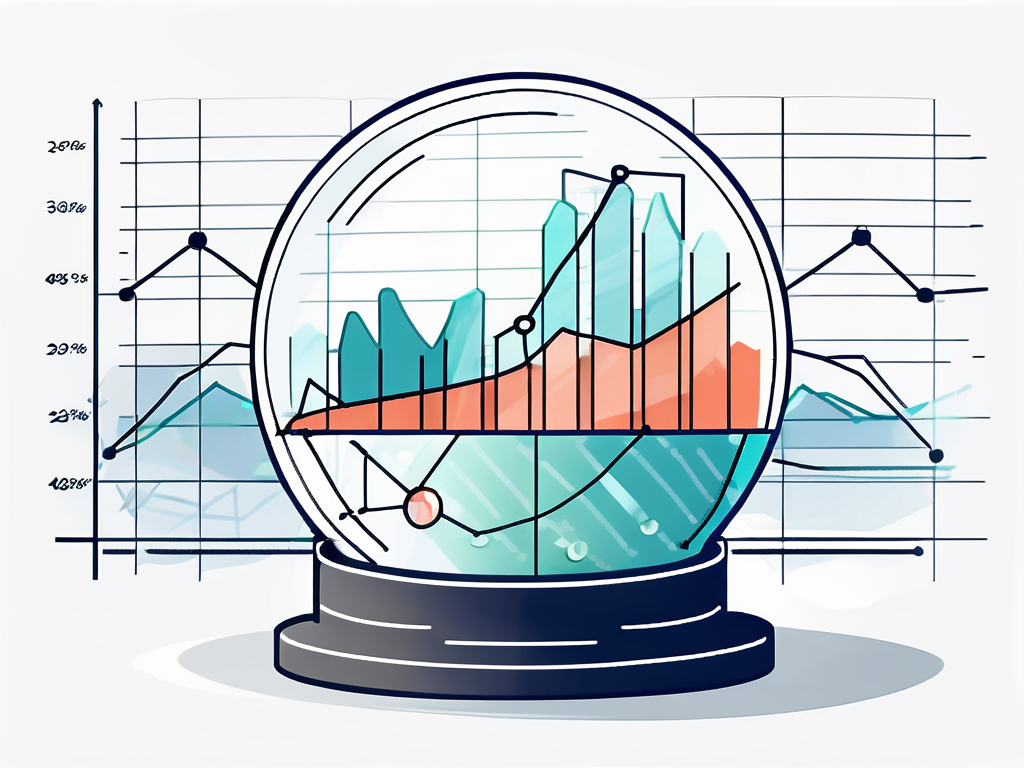Demand forecasting is an essential aspect of business planning and strategy. It involves estimating future demand for products or services based on historical data, market trends, and other relevant factors. By accurately predicting demand, businesses can make informed decisions about inventory management, production planning, and financial budgeting. In this article, we will explore the concept of demand forecasting, its key components, the process involved, different types of demand forecasting, and its impact on various aspects of business operations.
Defining Demand Forecasting
Demand forecasting refers to the process of estimating the quantity of a product or service that customers will purchase within a specific timeframe. It helps businesses anticipate market demand, plan their production levels, and allocate resources accordingly. Demand forecasting involves analyzing past sales data, market trends, customer behavior, and external factors such as economic conditions and competitor activities.

One crucial aspect of demand forecasting is the ability to adapt to changing market conditions and consumer preferences. Businesses must continuously monitor and adjust their forecasting methods to stay ahead of evolving trends and customer demands. This agility in forecasting allows companies to remain competitive and responsive in dynamic market environments.
The Role of Demand Forecasting in Business
Demand forecasting plays a crucial role in business operations. It provides valuable insights that guide decision-making across various departments and functions. By accurately predicting demand, businesses can optimize their supply chain management, reduce stockouts and excess inventory, minimize costs, and enhance customer satisfaction.
Furthermore, demand forecasting is not only limited to predicting customer demand for existing products but also extends to forecasting demand for new products or services. This forward-looking approach enables businesses to launch innovative offerings that resonate with consumer needs and preferences, driving growth and market expansion.
Key Components of Demand Forecasting
Demand forecasting comprises several key components that contribute to its accuracy and effectiveness. These components include historical sales data, market research, statistical models, and expert judgment. By combining these components, businesses can develop reliable and robust demand forecasting models.
Moreover, advancements in technology, such as artificial intelligence and machine learning, have revolutionized demand forecasting by enabling more sophisticated data analysis and predictive capabilities. By leveraging these technological tools, businesses can enhance the accuracy of their forecasts and gain a competitive edge in the market.
The Process of Demand Forecasting
The process of demand forecasting involves several steps that enable businesses to make well-informed predictions about future demand. These steps include data collection and analysis, predictive modeling techniques, and continuous monitoring and adjustment.
Effective demand forecasting is crucial for businesses to optimize their inventory levels, production schedules, and overall operational efficiency. By accurately predicting future demand, companies can avoid stockouts, reduce excess inventory costs, and improve customer satisfaction.
Data Collection and Analysis
Data collection is the first step in demand forecasting. Businesses gather historical sales data, customer feedback, market research, and other relevant information. Analyzing this data helps identify patterns, trends, and seasonality that can influence future demand.
In addition to internal data sources, businesses also leverage external data such as economic indicators, industry reports, and competitor analysis to enhance the accuracy of their demand forecasts. By incorporating a wide range of data sources, companies can gain a comprehensive understanding of market dynamics and consumer behavior.
Predictive Modeling Techniques
Predictive modeling techniques are used to develop mathematical models that forecast demand based on historical data and other variables. These techniques include time-series analysis, regression analysis, and machine learning algorithms. By applying these techniques, businesses can predict demand with a high degree of accuracy.
Advanced forecasting methods, such as predictive analytics and artificial intelligence, are increasingly being adopted by businesses to improve the precision of their demand forecasts. These cutting-edge technologies enable companies to analyze vast amounts of data in real-time and generate more nuanced predictions, leading to better decision-making and strategic planning.
Continuous Monitoring and Adjustment
Demand forecasting is an ongoing process that requires continuous monitoring and adjustment. As new data becomes available, businesses need to update their forecasting models and make necessary adjustments to ensure accuracy. By continuously monitoring demand and making timely adjustments, businesses can effectively manage their operations and respond to changing market dynamics.
Furthermore, collaboration between different departments within an organization, such as sales, marketing, and supply chain management, is essential for successful demand forecasting. By aligning cross-functional teams and sharing insights and data, businesses can enhance the accuracy of their forecasts and make more informed decisions to meet customer demand efficiently.
Types of Demand Forecasting
There are different types of demand forecasting methods that businesses can employ based on the time horizon and level of detail required. These methods include short-term demand forecasting, long-term demand forecasting, and passive and active demand forecasting.
Forecasting demand is a crucial aspect of business planning as it helps organizations anticipate market trends, manage inventory effectively, and make informed decisions about production and capacity. By utilizing various demand forecasting methods, businesses can minimize risks, optimize resources, and stay competitive in dynamic markets.
Short-term Demand Forecasting
Short-term demand forecasting focuses on estimating demand for a relatively short timeframe, usually up to one year. It is typically used for operational planning, inventory management, and production scheduling. Short-term forecasting techniques include moving averages, exponential smoothing, and regression analysis.
Moving averages involve calculating the average demand over a specific period, smoothing out fluctuations to identify underlying trends. Exponential smoothing assigns exponentially decreasing weights to past observations, giving more importance to recent data. Regression analysis examines the relationship between demand and various influencing factors to make predictions.
Long-term Demand Forecasting
Long-term demand forecasting involves estimating demand for an extended period, usually beyond one year. It is used for strategic planning, capacity expansion, and investment decision-making. Long-term forecasting techniques include trend analysis, market research, and scenario planning.
Trend analysis looks at historical demand patterns to identify long-term trends and make projections based on growth rates or seasonality. Market research involves gathering data on consumer preferences, economic indicators, and industry trends to forecast demand accurately. Scenario planning creates multiple scenarios based on different assumptions to prepare for various future outcomes.
Passive and Active Demand Forecasting
Passive demand forecasting relies on historical data and assumes that future demand will follow past patterns. It is useful when historical data is reliable and stable. Active demand forecasting incorporates external factors such as market trends, competitor activities, and economic conditions. It involves a combination of quantitative analysis and expert judgment to predict demand accurately.
Active demand forecasting requires continuous monitoring of market dynamics, competitor strategies, and macroeconomic factors to adjust forecasts accordingly. By integrating both passive and active approaches, businesses can enhance the accuracy of their demand forecasts and adapt to changing market conditions effectively.
The Impact of Demand Forecasting on Business Operations
Demand forecasting has a significant impact on various aspects of business operations, including inventory management, production planning, financial planning, and strategic decision-making.
Inventory Management and Production Planning
Accurate demand forecasting helps businesses optimize their inventory levels, reducing the risk of stockouts or excess inventory. By understanding customer demand patterns, businesses can plan their production schedules, allocate resources efficiently, and minimize wastage.
For example, let’s consider a retail clothing store. By analyzing historical sales data and using demand forecasting techniques, the store can anticipate the demand for different types of clothing items during different seasons. This allows them to stock up on popular items and adjust their production plans accordingly. As a result, they can avoid situations where they run out of stock during peak demand periods, ensuring customer satisfaction and maximizing sales.
Financial Planning and Budgeting
Demand forecasting plays a crucial role in financial planning and budgeting. By estimating future sales volumes, businesses can project their revenues, costs, and profitability. This information helps in setting realistic financial targets, allocating resources effectively, and making informed investment decisions.
Consider a manufacturing company that produces electronic devices. By accurately forecasting the demand for their products, they can determine the required production capacity and plan their budget accordingly. This allows them to allocate funds for purchasing raw materials, hiring additional staff, and investing in new technologies. By aligning their financial plans with demand forecasts, they can optimize their resource allocation and ensure a healthy bottom line.
Strategic Business Decisions
Demand forecasting is instrumental in guiding strategic business decisions. By accurately predicting demand, businesses can identify market opportunities, assess the feasibility of new product launches, and plan their market entry strategies. It enables businesses to align their operations and resources with changing market dynamics, ensuring long-term competitiveness.
Let’s take the example of a software development company. Through demand forecasting, they can identify emerging trends and customer preferences in the technology industry. This allows them to make strategic decisions on which software products to develop, invest in research and development, and allocate resources to stay ahead of the competition. By leveraging demand forecasting insights, they can position themselves as industry leaders and capture a larger market share.
In conclusion, demand forecasting is a vital tool that enables businesses to anticipate market demand, plan their operations, and make informed decisions. By understanding the key components and process of demand forecasting, businesses can develop accurate forecasting models that contribute to their overall success. Furthermore, different types of demand forecasting methods cater to various time horizons and level of detail required. The impact of demand forecasting extends to inventory management, production planning, financial planning, and strategic decision-making. By harnessing the power of demand forecasting, businesses can gain a competitive edge in the dynamic marketplace.






